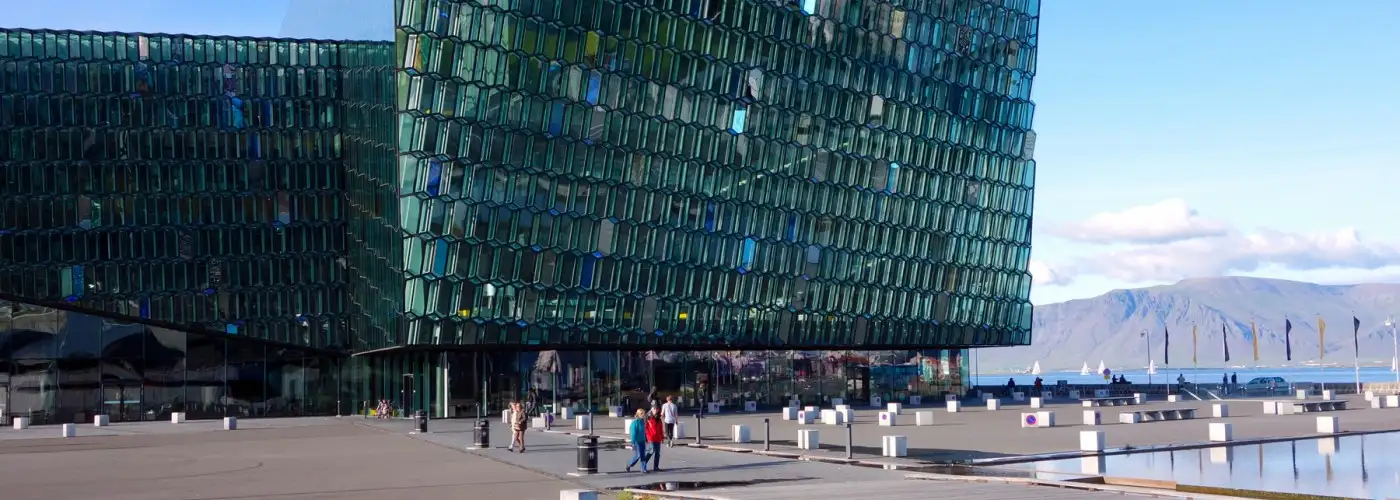Iceland is trendy these days. Its powerful loneliness and mighty features can be ideal for exotic film locations—parts of Game of Thrones, Batman Begins, Prometheus, and the 2014 version of Noah were filmed here. Some of my readers have been nagging me to add it to our guidebooks and tours. But until this summer, I’d never visited.
Since I flew Icelandair, which has famously liberal stopover privileges in Iceland’s capital Reykjavik, I told the Icelandic Tourist Board I had a couple of days and challenged them to show me the best of their country. They delivered.
Tourism is booming in Iceland—up 30 percent this year over its best-ever year for tourism in 2012. About half of the tourist revenue comes in July and August, when the days are long and the weather is pleasant. But even on a sunny day, I layered on everything I had and envied the locals with their woolly ski caps.
As this was my first time in Iceland, I enjoyed a burst of first impressions. I was struck by the brilliant light. Especially near the harbor, with the sun low in the sky, the colors are warm and rich, which makes Iceland a photographer’s delight.
Sparsely populated and geographically isolated, Iceland has a rich folklore along with a passion for nature—and a strong connection between its heritage and its landscape. It seems every rock has a thousand-year-old name and a legend to go along with it.
There’s no escaping nature in Iceland, and that’s turned into a plus. Trendy restaurants are enthusiastically organic—literally wallpapered with fish skin and serving gourmet delights on slabs of rock and rustic little planks. While many residents still consider the notorious local dish known as “rotten shark” a delicacy (they munch tiny bits of fermented shark and down it with the local firewater), the new Icelandic cuisine is enticing and tasty. And thanks to local expertise in greenhouse agriculture, plenty of excellent fresh fruits and vegetables are available.
Over half of all Icelanders live in or near Reykjavik. Since there are only 315,000 people on the island, it remains a small and easy-to-manage capital city. The city faces a century-old, workaday harborfront with busy dry docks and a hardy fishing fleet. The skyline—as seen from approaching ships—is dominated by its sleek and towering Lutheran church, Hallgrimskirkja. Rocketing organically out of the landscape, it seems to fit the terrain—the leading church in a society that is very close to nature.
The big news here is Reykjavik’s dazzling new Harpa Concert Hall and Conference Center. The word “harpa” has two meanings: the stringed musical instrument and (from the Old Norse calendar) the spring season, a time of rebirth. It was a much-needed addition to the city’s cultural infrastructure. Until 2011, the national symphony performed in a movie theater. The center was originally the vision of a local banking tycoon, and it was intended for what some considered “elitist activities”—the opera and symphony. But he went bust during the economic crisis, so the state and city took it over. Now it’s a 1,800-seat cultural palace with a mandate to bring diverse and affordable arts and culture to the populace. But, as happens with farsighted investments in culture all over the world, this hall still draws complaints. Old-timers grouse that for the cost of that fancy building, they could have bought 30 big fishing trawlers.
There’s a lot to be proud of here, but the local pride is partially the result of a psychological condition. Social scientists note that people who live on little, remote islands often have an inferiority complex and brag about whatever they can. It’s called the “Small Island Syndrome,” and it actually makes visiting Iceland more fun. Little things are big here. Icelanders of note who live abroad are almost revered. The place where Bill Clinton ate an Icelandic hot dog is practically a historical monument.
Travelers should seriously consider a visit here. Since the economic crisis of 2008, the value of Iceland’s currency has dropped by about half. While prices have risen on imported goods correspondingly, the cost of visiting, while still expensive, is about on par with Denmark—and much lower than in Norway. There are plenty of guesthouses, hostels, and fun, affordable eateries. Tourist activities and services (like bike tours and cheap shuttle buses from the airport) are competitively priced. All you need is a passport—and proficiency in the English language doesn’t hurt.
While I won’t be writing a guidebook to Iceland—and we won’t be incorporating Iceland into our tour program—I had a great visit. Whether or not you can pronounce any names on the map, Iceland is an easy and rewarding place for travelers.
(Rick Steves (www.ricksteves.com) writes European travel guidebooks and hosts travel shows on public television and public radio. Email him at rick@ricksteves.com and follow his blog on Facebook.)
(Photo: Rick Steves)
You Might Also Like:
We hand-pick everything we recommend and select items through testing and reviews. Some products are sent to us free of charge with no incentive to offer a favorable review. We offer our unbiased opinions and do not accept compensation to review products. All items are in stock and prices are accurate at the time of publication. If you buy something through our links, we may earn a commission.
Top Fares From
Today's Top Travel Deals
Brought to you by ShermansTravel
Porto to Lisbon: 7-Nt, Small-Group Portugal...
Indus Travels
 vacation
$1899+
vacation
$1899+
Greenland: Luxe, All-Incl. 11-Nt Exploration Small-Ship...
Swan Hellenic



Ohio: Daily Car Rentals from Cincinnati
85OFF.com






